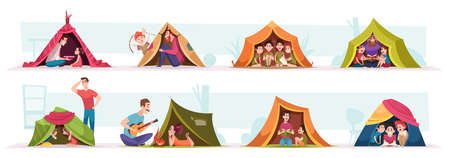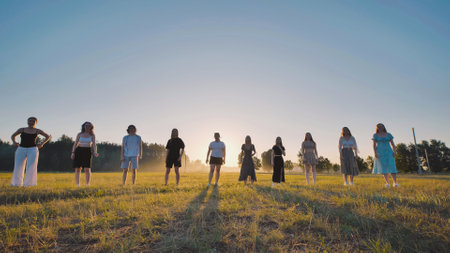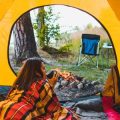Understanding Outdoor First Aid Basics
Before heading out for a camping trip, it’s vital to understand the basics of outdoor first aid. Nature is beautiful but unpredictable, and being prepared can make all the difference. Start by introducing your group or family to essential concepts: how to recognize common outdoor injuries like cuts, sprains, insect bites, allergic reactions, and heat-related illnesses. Emphasize that first aid outdoors isn’t just about treatment—it’s also about prevention and quick response. Knowing what to look for and how to act calmly gives everyone confidence and peace of mind. Outdoor first aid skills empower your group to enjoy nature with greater safety and resilience.
2. Gathering the Right Supplies
Before heading out into the wild, it’s essential to guide your group or family in assembling a first aid kit tailored for outdoor adventures. Start by gathering everyone together and laying out the necessary supplies on a table. Walk through each item, explaining its purpose and demonstrating how to use it. This simple ritual transforms gear into real-world confidence. Consider using a checklist or table to make sure nothing is missed and everyone knows what each item does.
| Item | Purpose | How to Use |
|---|---|---|
| Adhesive Bandages | Cover small cuts and blisters | Clean wound, apply bandage |
| Sterile Gauze Pads | Dress larger wounds | Place over wound, secure with tape |
| Antiseptic Wipes | Disinfect skin and wounds | Wipe gently before bandaging |
| Tweezers | Remove splinters or ticks | Sterilize and grasp firmly |
| Moleskin | Prevent blisters on feet | Cut to shape, place over hotspot |
| Instant Cold Pack | Soothe sprains or bruises | Squeeze to activate, wrap in cloth before applying |
Encourage each person to ask questions about any unfamiliar items. Revisit this process before every trip; it’s a practical way to empower everyone, especially kids, to take responsibility for safety. By making this step interactive, you build trust and readiness within your group—key qualities for any outdoor adventure.

3. Teaching Hands-On Skills
Nothing prepares your group or family for the outdoors like hands-on first aid practice. Before heading out, set aside time to work together on real-life scenarios. Start with wound care—practice cleaning, bandaging, and learning when a cut needs more attention. Move on to splinting by using sticks, towels, or any available gear to stabilize a mock injury. Allergic reactions are also important: walk through how to spot symptoms and use an epinephrine auto-injector if needed. These practical sessions build confidence and muscle memory, making everyone more ready to respond calmly in an emergency. Keep it simple, repeat key steps, and make sure each person gets a turn so everyone feels prepared before your trip.
4. Running Realistic Scenarios
One of the best ways to prepare your group or family for outdoor emergencies is by simulating real-life situations. Choose a safe spot like your backyard or a local park, and create mock scenarios that might happen while camping. This hands-on practice helps everyone build confidence, understand their roles, and learn how to work together under pressure.
How to Set Up Scenarios
Start with simple situations, such as someone twisting an ankle on a hike or experiencing a bee sting. Gradually increase complexity as your group gains experience. Assign roles—one person acts as the “injured” party while others respond. Rotate responsibilities so everyone gets a turn as both helper and patient.
Common First Aid Scenarios to Practice
| Scenario | Skills Practiced | Equipment Needed |
|---|---|---|
| Sprained Ankle | Assessment, splinting, moving a person safely | Bandana, sticks, ace wrap |
| Bee Sting Allergic Reaction | EpiPen use, recognizing symptoms | EpiPen trainer, antihistamines |
| Burns from Campfire | Cooling burns, covering wounds | Cooled water, sterile gauze |
| Lost Person Drill | Communication, search strategies | Whistle, walkie-talkies (if available) |
| Nosebleed in Dry Weather | Stopping bleeding, calming patient | Tissues or clean cloths, gloves (optional) |
Tips for Success
- Debrief after each scenario—discuss what went well and where you can improve.
- Encourage clear communication and calm decision-making.
- Use real equipment whenever possible so everyone knows how it feels in their hands.
- If children are involved, keep scenarios age-appropriate and focused on basic steps.
- Rotate leadership so every member practices giving instructions under stress.
This type of active learning not only prepares your group for emergencies but also strengthens trust and teamwork before you ever leave home.
5. Planning for Communication and Help
When you’re outdoors, calling for help isn’t always as simple as dialing 911. Before your camping trip, gather your group or family and discuss how to reach emergency services in remote areas. Teach everyone how to describe your exact location using landmarks or GPS coordinates—this can save valuable time if you need assistance.
Critical Local Emergency Contacts
Research the nearest hospitals, ranger stations, and local authorities before leaving home. Write down their phone numbers and keep them in a waterproof bag. In many US parks, cell service is unreliable, so also note locations of the nearest payphones or radio call boxes.
Developing a Group Safety Plan
Build a safety plan together. Assign roles: Who carries the first aid kit? Who leads navigation? Make sure everyone knows the agreed meeting point if separated. Review how to use signaling devices like whistles or mirrors. Practice these plans before your trip to build confidence and calmness in emergencies.
Stay Calm and Connected
Above all, remind your group that staying calm is key. Regular check-ins and open communication keep everyone safe and aware of their responsibilities. With preparation, you’ll be ready to handle whatever comes your way on the trail.
6. Normalizing Calm and Clear Thinking
In an outdoor emergency, panic spreads quickly. Before your trip, introduce your group or family to simple mindfulness and grounding exercises. Teach everyone—even kids—to take slow, deep breaths when stress rises. Practice counting five things you see, four you can touch, three you hear, two you smell, and one you taste. This method brings focus back to the present. Encourage open conversations about fear and anxiety so no one feels alone if they freeze up. During your first aid practice sessions, simulate stressful situations and coach your group to pause, breathe, and speak clearly before acting. Remind them that staying calm is as important as knowing what to do. Over time, this approach helps everyone respond with steady hands and clear minds—making your outdoor adventures safer for all.


